




GIRAFFE DAY 21ST JUNE 24


12 EDITIONS READ BY OVER 162,000 RESIDENTS • CLAY CROSS • DANESMOOR • LOWER PILSLEY • OLD TUPTON • PILSLEY
















GIRAFFE DAY 21ST JUNE 24


12 EDITIONS READ BY OVER 162,000 RESIDENTS • CLAY CROSS • DANESMOOR • LOWER PILSLEY • OLD TUPTON • PILSLEY










Hello Readers,
Some months just feel busy but with no actual outcomes, if you know what I mean…. and I think that would be May for me!
Daft things, lots of ‘busy fool’ errands and long-term jobs started and not quite finished type of stuff. Not helped, may I add, by a broken washing machine which needed replacing and another Friday night emergency trip to the vets with ‘Smack-head Steve’ (aka Flake the dog) and his penchant for sniffing out narcotics and ingesting them from the local park! Even the vet said “it’d be cheaper for you to find the dealer at source” – he wasn’t wrong when the invoice landed! Anyway, enduring an expensive month whilst simultaneously having nothing to show for it, doesn’t half make one consider their life choices!!
Which is a beautiful segway onto exam times for all students currently. Ahhh, if I knew then what I know now…..I would have found a way to make sure that I was Jeff Bezos’s first wife!!! However, back in real life – I have two further observations on exams based on my own experiences. Number one – given enough time, the specifics of the exam results don’t matter too much,


particularly if you go onto further education. Number two – even those of us with a terrible memory manage to stagger our way through. Find your way and back yourself, it’s a tiny snapshot of your story and despite the outcome, there will come a time when you look back with fond memories! An example of this was when we were giggling in the office the other day because back in the 90’s/early noughties, exam invigilators went apoplectic if you had a scientific calculator near you! If you consider all the technology that is at the students’ disposal today, it does give you a giggle. I mean, apart from in a maths exam (which is legit), what could you do with it??!! Apart from anything, have you ever tried to smuggle a scientific calculator?! Unlike, say, oooh, I don’t know, a smart watch for example!! Anyway, best of luck to all the parents, guardians and grandparents at this difficult time. May your patience be eternal and your drinks forever flowing!
I’m off to Ninja Warrior now with 3 kids on a Bank Holiday – send help and kind thoughts, as I clearly need my head read!!!
Happy reading, Emily x
It may be just me but in the pantheon of weirdly designed animals, the giraffe has to be at, or near the top of the list.
Evolutionary theory tells us that they developed their extraordinarily long necks in order to reach the most succulent vegetation found at the tops of trees.
My simplistic brain can’t help but think…well why did they not just eat something lower down? And what did they eat before their necks stretched so much?
Don’t get me wrong, I have absolutely nothing against giraffes. In fact their faces are really rather appealing, all angles, big eyes and long, long eyelashes. They even have the equivalent of fingerprints as no two giraffes have the same coat pattern. But they just seem so blinking awkward!
It’s a wonder any baby giraffes survive the fall from mum’s…errr…rear end… to the ground. Given the fragile nature of the long newborn neck, it must be very easy for it to break in the event of a less than safe landing.
That fact alone has me amazed that the species managed to survive and evolve.
And have you ever seen giraffes fighting?
Apparently they find it very difficult to lift their legs off the ground to kick out, which is what most ruminants would do. So, instead, they bash their necks together…really, really hard.
Honestly, they are so badly designed that their necks are too long for them to drink unless they splay their legs out before dipping towards the water source. I mean… really!
Their circulatory system also has to cope with the fact that their blood pressure dips dangerously low when they bend their head to drink. The jugular veins have developed incredibly elastic walls and large one-way valves that allow the veins to expand significantly and prevent the blood from flowing back to the brain when the giraffe’s head is lowered.
The poor creatures can’t even lie down for a proper kip either. They do “lie” down with their long legs tucked underneath them, but the neck is usually still upright. Occasionally, and only for very short periods of normally not more than 5 minutes, giraffe can sleep with their head resting back on their rump.
Five minutes sleeping!
I could not be a giraffe!
Joking apart, there is a serious side to this article – June 21 is World Giraffe Day – a day to remind us that giraffes are in fact an at risk species. There has been an almost 30% population decline over the past three and a half decades, leaving an estimated population of 117,000 individuals.
They may be ungainly and awkward, but they do deserve to be respected, cared for, and allowed to flourish, as does every other species on this planet we all call home.








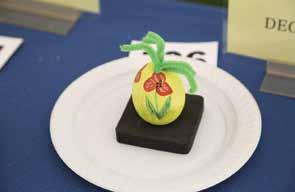



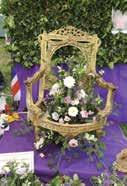










Milliners design and make hats and other headgear such as caps, berets, bonnets, fascinators and bridal headpieces, using materials such as felt, fabric, fur, leather, straw, artificial flowers, ribbons, braids and feathers.
Milliners mark out and cut patterns to create designs for hats. They then cut out the various components and assemble the hat. This may involve twisting, rolling, folding, reinforcing, sewing, steaming and pressing various components. They may also alter or renovate hats. They may also be involved in displaying hats or preparing them for sale.
Skills
Milliners may perform the following tasks:
• Interpret fashion trends and use them in designing hats and other headgear.
• Mark and cut patterns to desired shape and size, lay the pattern onto fabric and cut around it.
• Shape, cut, twist, roll, fold and reinforce fabrics and other materials with wire to gain desired effect.
• Assemble hats by hand or using a sewing machine.
• Steam and press material into shape by hand and, if needed, stiffen it by using a special solution.
• Sew trimmings such as ribbons, buckles, braids or chains onto hats.
• Operate semi-automatic blocking machines for mass production.
• Alter, renovate and re-block (re-shape) existing hats.
• Package and dispatch hats for customers.
• Display, fit and sell hats and accessories.
Historically, milliners produced or imported an inventory of garments for men, women, and children and sold these garments in a millinery shop.
The millinery industry benefited from industrialisation during the nineteenth century. In 1889 in London and Paris, over 8,000 women were employed in millinery, and in 1900 in New York, some 83,000 people, mostly women, were employed in millinery. Since the massmanufacturing of hats began later in the 20th century, the term “milliner” is usually used to describe a person who applies traditional hand-craftsmanship to design, make, sell or trim hats primarily for a mostly female clientele.
The term “milliner” or “Milener” originally meant someone from Milan, Italy, in the early 16th century. It referred to Milanese merchants who sold fancy bonnets, gloves, jewellery and cutlery. In the 16th to 18th centuries, the
meaning of “milliner” gradually changed in meaning from “a foreign merchant” to “a dealer in small articles relating to dress”. Although the term originally applied to men, from 1713 “milliner” gradually came to mean a woman who makes and sells bonnets and other headgear for women.
Milliners work independently based on job order specifications or their designs, observing the regulations regarding work safety, health protection, environmental protection, and ensuring quality and efficiency. They combine their uniqueness, innovation, and technical skills and use different materials and auxiliary materials. In some cases, they plan and organise their schedules in cooperation with their customers’ various needs. They also collaborate with the team or the apprentice to the presentation and sale of the products.
The millinery industries apprenticeship culture is commonly seen since the 18th century, while milliner was more like a stylist and created hats or bonnets to go with costumes and chose the laces, trims, and accessories to complete an ensemble piece. Millinery apprentices learned hat-making and styling, running the business, and skills to communicate with customers.
A wooden hat block is an intricately carved wood form shaped by skilful woodworkers. Hat blocks are the tools of the trade for milliners in creating a unique hat crown shape. Some of the hat blocks are ensembled with crown and brimmed, while some are only with crown or brim or designed for fascinators. Milliners always have an extensive collection of different hat blocks because there are specific hat sizes and custom shapes for every hat block. In the blocking process of a hat, milliners used push pins and a hammer to hold the adjustable string along the crown’s collar and the brim’s edge.
A floral-making iron is a unique iron used by milliners to create different floral petals or leaves as the ornament for hat decoration. In the past, candles were used to heat these irons with various shapes of metal in one set.
Milliners often use something called Buckram, a stiff cotton (occasionally linen or horse hair) cloth with a loose weave. Millinery buckram is impregnated with a starch which allows it to be softened in water, pulled over a hat block, and left to dry into a hard shape. Millinery buckram comes in many weights, including lightweight or baby buckram (often used for children’s and dolls’ hats), single-ply buckram, and double buckram (also known as theatrical buckram or crown buckram).
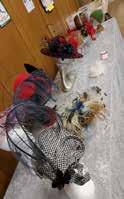


enquiries@hopkins-solicitors.co.uk
It’s all about finding a local expert that you can trust, that will keep your best interests at heart, whilst giving you straightforward advice.
No matter what twists and turns life throws at you, our legal team are here to help. But we are more than legal experts, we love to help people.
> Wills & Property Trust Wills
> Lasting Powers of Attorney
> Injury or Illness Claims
> Divorce or Children Matters
> Employment Advice
> Financial Disputes
Appointments by voice-call, video-call, in-person at one of our offices or if you are unable to leave the hospital our staff are happy to visit you at your bedside.









@Prioritystairlifts


■
■
■
■
■
■
■
■















Treat yourself to a luxury break at the 4* Gold Award winning Little Red Hen House. An elegant and cosy holiday home just a 7 minute drive from award-winning and dog-friendly Warkworth beach.


✽ 2 spacious en-suite bedrooms
✽ A fully enclosed garden
✽ 2 small to medium dogs welcome (3 upon request)
✽ Fully equipped kitchen, including an American style fridge freezer


✽ Perfect for exploring the stunning Northumbrian Heritage Coastline
✽ Close to a range of dog friendly pubs, cafes and restaurants in stunning Warkworth
✽ We have fast fibre Wi-Fi and smart TV’s Search ‘The Little Red
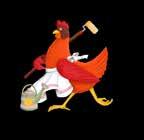



Sticky chicken drumsticks and chips with American-style salad
1. Put the chicken, spices and 1 level tbsp sriracha in a large bowl. Mix everything together using your hands, until the chicken is evenly coated. Cover and chill for at least 1 hour, or overnight.
2. Preheat your oven to 200°C/fan 180°C/gas 6.
3. Spread the chips out on a large, non-stick baking tray in a single layer and spray with low-calorie cooking spray. Spread the drumsticks out on another non-stick baking tray. Put the chips on the shelf below the chicken and cook for 20 minutes, then turn





everything and swap over the trays. Cook for a further 20 minutes, or until the chicken is cooked through.
4. At the same time, toss together the celery, cucumber, lettuce and radishes. Mix the yogurt with the chives, lemon juice and garlic granules, and season lightly.
5. Stir the yogurt dressing through the salad and scatter over the reserved chives. Brush the remaining sriracha evenly over the chicken. Serve 2 drumsticks per person with the chips and salad

think of eating al fresco whilst soaking up the sun. With a mix of spicy sticky chicken, light crispy chips and cool tasty salad, this dish is perfect for those chilled out days ahead.
• 8 chicken drumsticks, skin and visible fat removed, flesh scored
• 2 tsp smoked paprika
• ½ tsp ground allspice
• 2 level tbsp sriracha
• 800g floury potatoes, such as Maris Piper or King Edward, cut into chips
• Low-calorie cooking spray

For the salad:
• 4 celery sticks, chopped
• 1 cucumber, halved lengthways, deseeded and sliced
• 2 little gem lettuces, shredded
• 200g radishes, chopped
• 200g fat-free natural yogurt
• ½ small pack fresh chives, chopped, reserving some to serve
• Juice of 1 lemon
• ½ tsp garlic granules
in: 55 minutes (plus 1 hour






For some years, Clay Cross Parish Council have been custodians of this charity. It has remained largely untouched as the conditions for giving grants was viewed as difficult to administer. It was therefore decided to apply to the Charity Commission to wind up the charity and divide the monies equally between Holmgate Primary School (& Nursery) and Sharley Park Community Primary School.
On Friday 15 March 2024, the Parish Councillors responsible for the charities upkeep, Councillor Gerry Morley, Councillor Brian Wright and Councillor Ted Mansbridge presented cheques of £3,235.50 to both schools.



Members of Clay Cross Parish Council, North East Derbyshire Climate Action Group, along with the Staff and Cadets of 2326 (Clay Cross) Squadron ATC, met on Saturday, 23 March 2024


to plant a selection of fruit trees within Kenning Park. The fruit trees were sourced by the Action Group and Councillor Ted Mansbridge. We all sincerely hope that this project will add to the environmental re-generation of the park and forthcoming new initiatives.






So Summer is about to arrive and if you’re anything like me you’re more than ready for it! Whilst our furry friends need a walk whatever the weather, it’s a lot nicer when it’s not quite so grotty. This month’s walk sets off from the village of Scarcliffe. It’s a lovely, varied walk that makes use of some paths in the nearby woods allowing you to explore this lesser seen part of this beautiful area.
6-MILE CIRCULAR WALK FROM SCARCLIFFE
A mid distance walk which should take you and your dog around 2½-3 hours to complete. The walk is mostly on trails and paths but there may be some uneven and muddy terrain, particularly with inclement weather so please wear appropriate footwear. There is also a couple of roads to cross and one short section of road to walk along, so please take plenty of care. As always, follow the countryside code, keeping dogs on leads where appropriate.


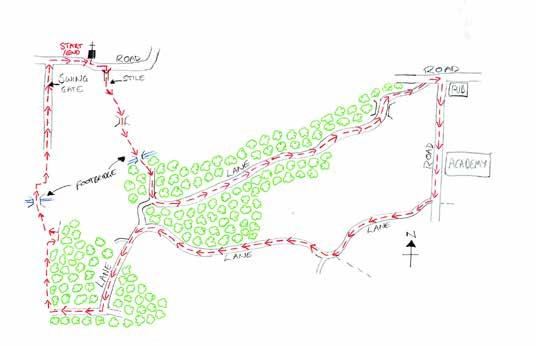
START: CHURCH OF SAINT LEONARD, SCARCLIFFE. S44 6TE


1. Standing with your back to the church turn left and continue along the road. After a short distance and just prior to a road on your right, turn right onto a lane and signposted footpath to thread between the houses. At the end of the lane/driveway continue straight ahead onto a footpath. After a very short distance, ignore the stone stile on the right and climb over the stone stile in front of you.
2. Now continue straight ahead and walk along the edge of a field with a hedge on your right. After some distance follow the footpath sharp right and immediately cross over a stone bridge. Now continue straight ahead to cross a field with a hedge on your left.


3. After some distance continue along the footpath with a hedge on both sides and then cross over a wooden footbridge. Now continue straight ahead going gently uphill into some trees. After a short distance you will reach a lane. Turn right onto the lane and pass a marker post on your right and continue straight ahead.
4. Continue straight ahead for a short distance and then the lane splits into two. Take the left split and then curl around to the left to continue along a lane with trees on both sides. After a long distance you will continue straight ahead with trees on your left and open views to the right.
5. Continue until eventually reaching a road. Turn right along the road for a short distance and then turn right again along ‘Common Lane’. After a short distance and at a bus stop on your left bear slightly left onto a footpath running parallel with the road. Then after some distance the path comes back alongside the road.
6. Continue along the road for a long distance, passing an academy on your left. After passing the academy and upon reaching two no entry signs on your left, turn right along a lane and signposted footpath on your right.
7. After a short distance pass by a large gate and then continue with a hedge on both sides. Continue for a long distance until reaching a footpath on your left which is marked by a marker post on your left. Immediately after the footpath on the left and at a junction of lanes bear to the right and then continue straight ahead with a hedge on your left and trees on your right.
8. Continue along this lane for a long distance and eventually reaching a T junction of lanes. Turn left at the T junction and continue along a lane. After a short distance ignore a lane on your right and continue straight ahead along the lane heading into the trees.
9. Eventually the lane begins to climb steeply. At the top of the hill the lane splits into two. Take the lane on the right and continue straight ahead heading through the trees. After some distance
you will pass by a gate and come out of the trees to a T junction of paths. Standing with an open field in front of you turn right and continue along a footpath with trees on your right and open views on your left.
10. Continue straight ahead and you will begin to drop downhill. At the bottom of the hill upon reaching a small fence directly in front of you, turn right, continue for a very short distance and then pass through a gap in the fence. Turn immediately left, ignoring the path going downhill through the trees, continue straight ahead for a very short distance, and then turn right to continue downhill through an open field.
11. At the bottom of the hill cross over a small wooden footbridge and bear left. Then head diagonally right, heading uphill and through the woods. Keep to the path for some distance to reach a gate.
12. Pass by the gate to join a lane. Continue straight ahead with a hedge on both sides. After some distance you will pass through a small metal swing gate adjacent to a large metal gate. Continue straight ahead until reaching a road.
13. Turn right along the road heading downhill and back into the village of Scarcliffe. Eventually you will reach the church.



This walk is for illustrative purposes only. Voice Magazines Ltd takes no responsibility for anyone who chooses to follow this route and encourages all walkers to obey all byelaws and signs and to respect the area they are walking in, ensuring they pick up all dog mess and obey the countryside code at all times.



Heythorp Park, Cotswolds Mon 1st - Fri 5th Jul
5 Days - £645

10th - Sun 14th Jul 5 Days - £465
5 Days - £599 PORTHCAWL Seabank Hotel



Ground Floor, Multi-Story Car Park, New Beetwell Street, Chesterfield, S40 1QR
Boot Scooter



Manual Wheelchair


GOING AWAY FOR A HOLIDAY OR SOMEONE COMING TO STAY?
If you require a Manual Wheelchair or a Boot Scooter to hire to take away or stay at home we can help you
Wheelchair and Electric Scooter hire
Servicing Battery & Charger Testing

Breakdown and repair services
Safety checks
Driving Tests
TRACKS AND TRAILS TASTER DAYS - Further dates coming soon!




I have recently acquired a magnificent piece of social history: a Reckitt and Sons vintage demonstration box of the type used by travelling salesmen. It contains sample items of many of the products Reckitt’s made. Their earliest creation was laundry starch in 1819. The dolly blue bag and black lead followed in 1852. It is now a worldwide company.
Alongside the dolly blue bag is a “cream tint” bag. We have asked many people through our social history talks, and no one is able to remember the red and cream bag or knows what it was for.
We would welcome any information on this item. One of my favourite products was, and still is, Windowlene -pink and fragrant, smeared on your glass would bring your windows up a treat, polished to a shine with newspaper. Reckitt’s has been at the forefront of health and household products for two hundred years, developing brands like Dettol, Steradent, Harpic and Strepsils.


of
Complete Range of Ladies & Gents Hairdressing
Fully Qualified
Children’s Hair Cuts & Style


Wedding & Bridal Packages
Hair Styles


For me, the smell of Brasso particularly brings back memories of my father polishing his army buttons and buckles. He was a regular in the Sherwood Foresters and is still as well turned out as ever. He used to sing a song about “Shine up your buttons with Brasso” but only the clean version! My husband, Paul, learned the other version in the school cadet corps. When we show this very special item at our presentations, it elicits warm and fond memories of familiar items we have grown up with and will continue to grow old with.


Janet and Paul Barrass are All Around the Shire. Find us on or email: oldfield512@btinternet.com for more



Squad Girls’ Football sessions are a fun, non-competitive way to play football locally with friends, old and new.
Whether they are completely new to the sport, are looking to transition from Weetabix Wildcats, or simply want to give it a go, Squad Girls’ Football is designed to help develop skills and build confidence, whilst encouraging girls to play their way.
New Tupton Ivanhoe F.C. Squad sessions take place on a Thursday night on pitch one at Tupton Rec from 5.00pm – 6.00pm and cost £3.
Antony Maidens, Chair of New Tupton Ivanhoe F.C. said: “We are really excited to launch our Squad Girls Sessions. We have seen the success of Wildcats and look forward to encouraging more people to enjoy football in a friendly inclusive environment.”
Do you know some one aged between 12-14 who is keen to kickstart or continue their football journey? If you are interested in joining the Squad session please contact Dave Hoult, Club Secretary on 07759 048 037.


If you are interested in Little Ivanhoes, The Wildcat Centre or joining a team please message the clubs facebook page at: www.facebook.com/newtuptonivanhoefc/ visit: www.newtuptonivanhoefc.co.uk or contact the Dave Hoult, Club Secretary on 07759 048 037

Pitcherwits® are crossword puzzles where some of the clues are in pictures. Sound easy? It’s not called “Pit-your-wits” for nothing! The mixture of cryptic and picture clues, combined with Professor Rebus’ unique sense of humour, will keep you entertained for hours.

Across
1 Go round a meerkat duo? Not likely! (4,1,6)

8 Near to shut, say, the shop (5-2)

11 Break it, upon a state that’s ideal (7)
16 Correct level of fancy trim to hang out (5,6)

Across
5 Basking shark spotted in the resort (3)
7 Under-water replacement player? (3)
10 Producer of brewed Red Beer (7)
14 I’ve come to compete (3)
15 Good enough to have some sticky stuff (3)
Down
2 Turn out a selfish leader? (4)
3 Alternative of fermentation lees (4)
9 Over-priced soak? (5)
12 Push out on arduous trip (4)
13 Two people, together with a bit of a list? (4)
1 It’ll be getting foggy if you badly mis-govern it (7,4)
4 Bunny-walker to be made into abbot’s fir (7,4)
6 Lie about cube being jeans colour (3,4)
7 Frugal cutting down under Swedish leader (7)












•

•
•
•








•
•











You might think you’re doing them a favour, but it usually leads to floppy soft growth, which is more likely to collapse in rain or wind – not that we’re expecting this summer to have any of that! Staking is pretty important but don’t tie them in too closely, they need to bend with the wind but if you do lose stems, cut them back cleanly and you may get new growth below.
Prune philadelphus, forsythia and currant now they’ve finished flowering. They produce next year’s flowers on this year’s growth so pruning early gives more growth before winter.
If you want to lift this year’s tulips to clear beds or pots, wait till the foliage has turned yellow – generally about six to eight weeks after flowering. Cut off the stems, remove the foliage and leave the bulbs to dry then store in a paper bag somewhere dry and cool. Offsets –the little bulblets which grow alongside the main bulb can be pulled away, and treated as above then replanted in autumn about eight to ten inches deep. The main bulb can be planted around six inches deep in late autumn and even through until December or early January, although that display will be later.





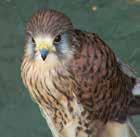
Often mistakenly called a ‘hawk’, the kestrel or windhover is perhaps our most familiar bird of prey, and it is a falcon related to the diminutive merlin and the awesome peregrine. This was the bird of prey which seemed to survive the nadir of our raptors during the bad days of the 1950s to the 1980s. Ruthless persecution and use of persistent pesticides eradicated most birds of prey like common buzzards, sparrowhawks, peregrines, and red kites. These species hung on in the western parts of Great Britain but were largely extinct in and around the Peak District. The exception to this was the kestrel which seemed to quietly go about its business and was largely under the radar. This species also benefitted from the new motorways and dual carriageways which proliferated from the 1960s onwards and provided abundant verges full of mice and voles for kestrels to hunt. Indeed, it was in such places that most people became familiar with the windhover. They also adapted well to high-rise living in towns and cities and to disused or abandoned old quarries. In the absence of predation by or competition with the other raptors, the kestrel thrived, and along Peak District gritstone edges, it was possible to see ten or more birds in a single afternoon.
However, in recent years it seems that the kestrel population has shrunk somewhat, and this may be because the other birds of prey have recovered
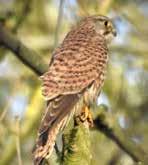

considerably and re-colonised the region in good numbers. Both common buzzard and peregrine falcon will compete for space and even predate the smaller kestrel, and so their numbers and distribution have now reduced. Indeed, the most frequently spotted birds of prey are probably sparrowhawk (a species which is certainly thriving), and common buzzard. The latter can be seen soaring over breeding sites with several birds in the air at any one time. The other coloniser is of course the spectacular red kite, though these still lag behind buzzards in the Peak. Another bird of prey yet to recolonise is the osprey which passes through on migration but as yet (I think) has not nested. Hopefully, the moorland hen harriers are starting to return, though peregrines still seem to do better in the urban areas than they do in the wild spaces of the Peak.
As numbers of these species continue to grow, there will be more competitive interactions between them, and with other potential rivals for space such as the raven. None of these birds likes its neighbours to be too close!
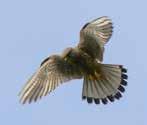
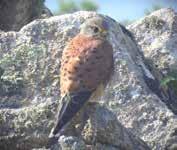

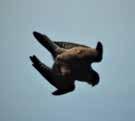
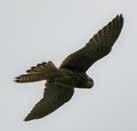
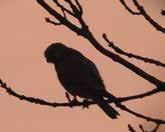
Professor Ian D. Rotherham, researcher, writer, broadcaster on wildlife and environmental issues in the Peak District and elsewhere, is contactable on ianonthewildside@ukeconet.org. Follow his website www.ukeconet.org, blog www.ianswalkonthewildside.wordpress.com/ & Twitter @IanThewildside

Call MPC Services to arrange an empty, service or clean for your tank!

Let our team know that you heard about us in WIN one of - excl. parts & tanker, terms and
The MPC Services team are here to help make sure that your sewage system is working well, properly maintained, up to date with the latest compliance regulations, working quietly and energy efficient. *Energy saving based on simply changing your traditional 85W air blower for a modern efficient FujiMAC 47W Japanese one, with electricity at 55p/kWh, for no loss of performance. Additional efficiency savings are typically possible.
Ask us about:
Annual maintenance, call-outs or Tank emptying
Any bad smells, noises or other sewage issues
Proper ty transactions & compliance





We work in Clay Cross, Danesmoor, Lower
Pilsley, Old Tupton & Pilsley & all surrounding areas
All
Highly Experienced
Clear

Boiler Breakdowns
Boiler Servicing
Radiators & Pipes
Tanks & Cylinders
Toilets & Taps
Leaks & Bursts
Showers
Clearing Blockages
Pipework Replacement
Gas Safe Certified






